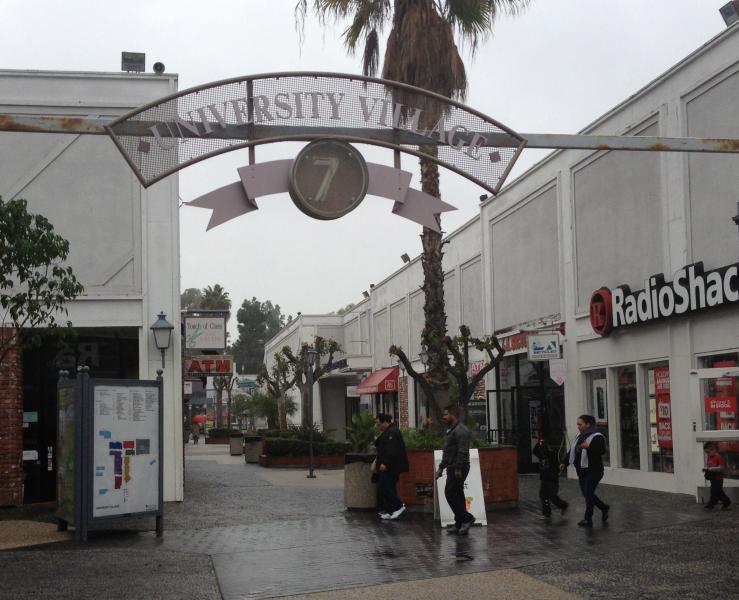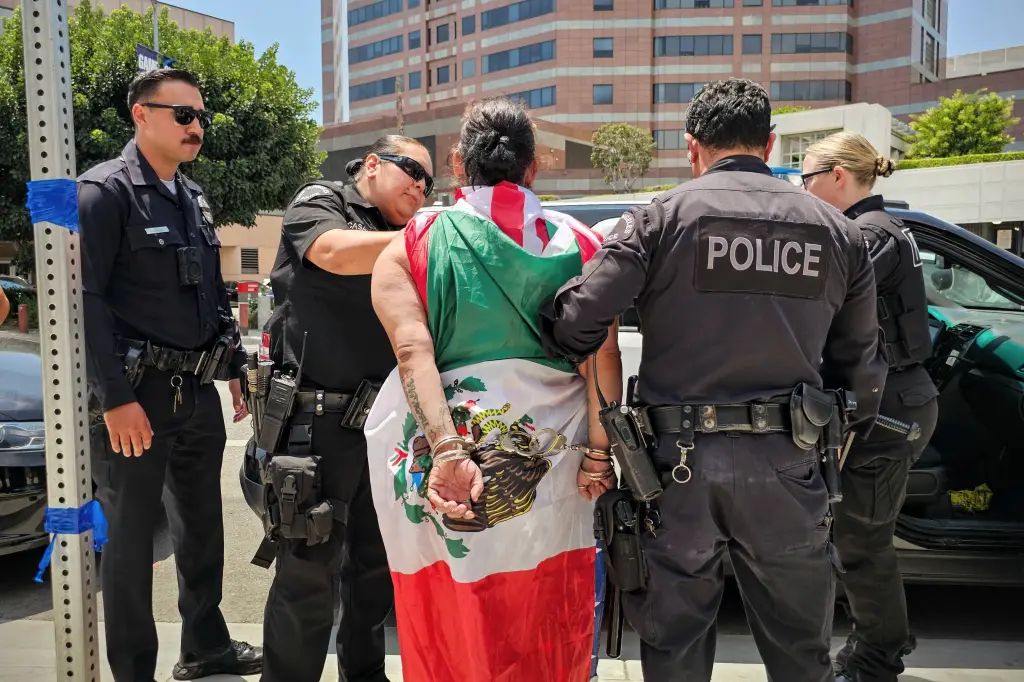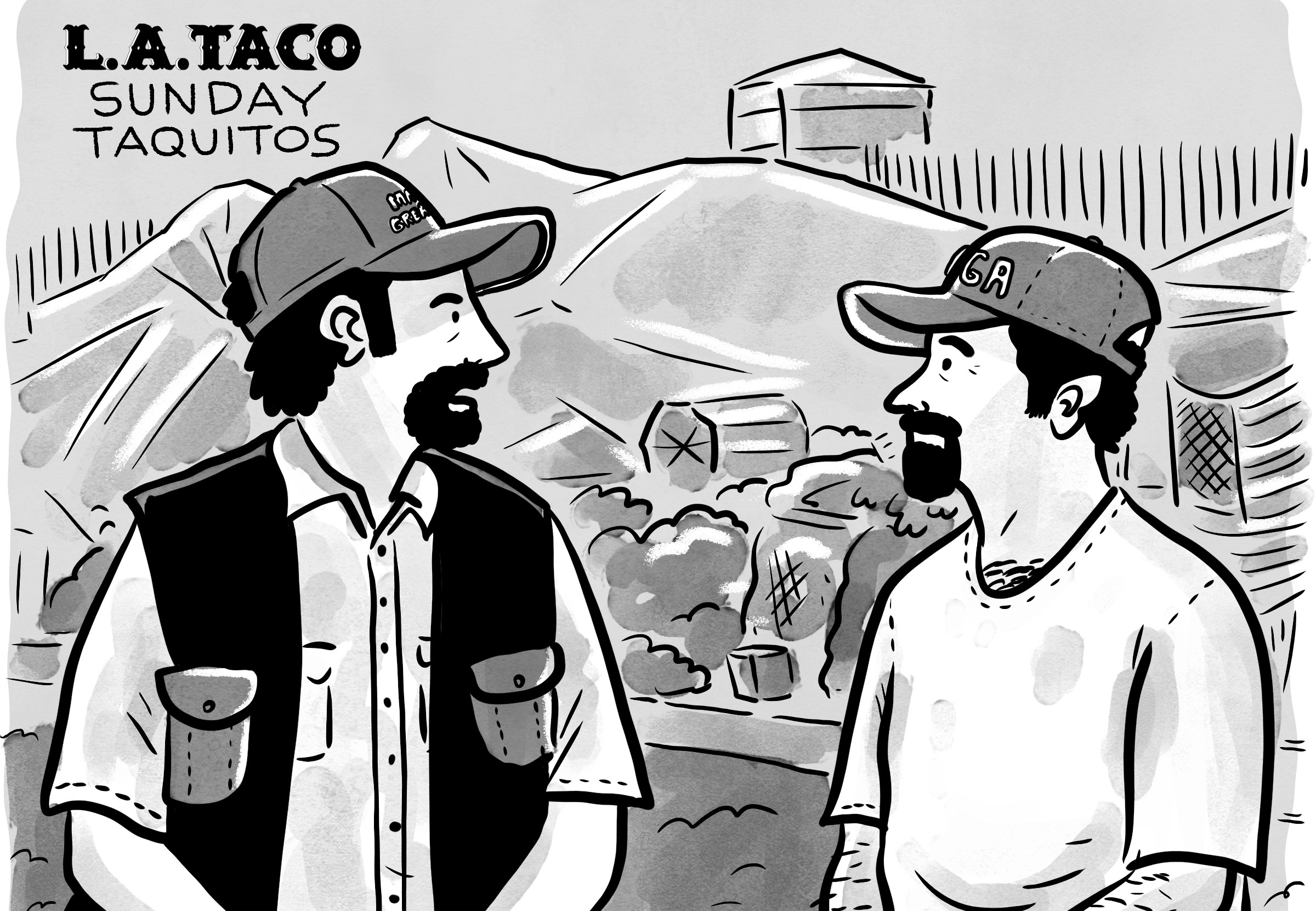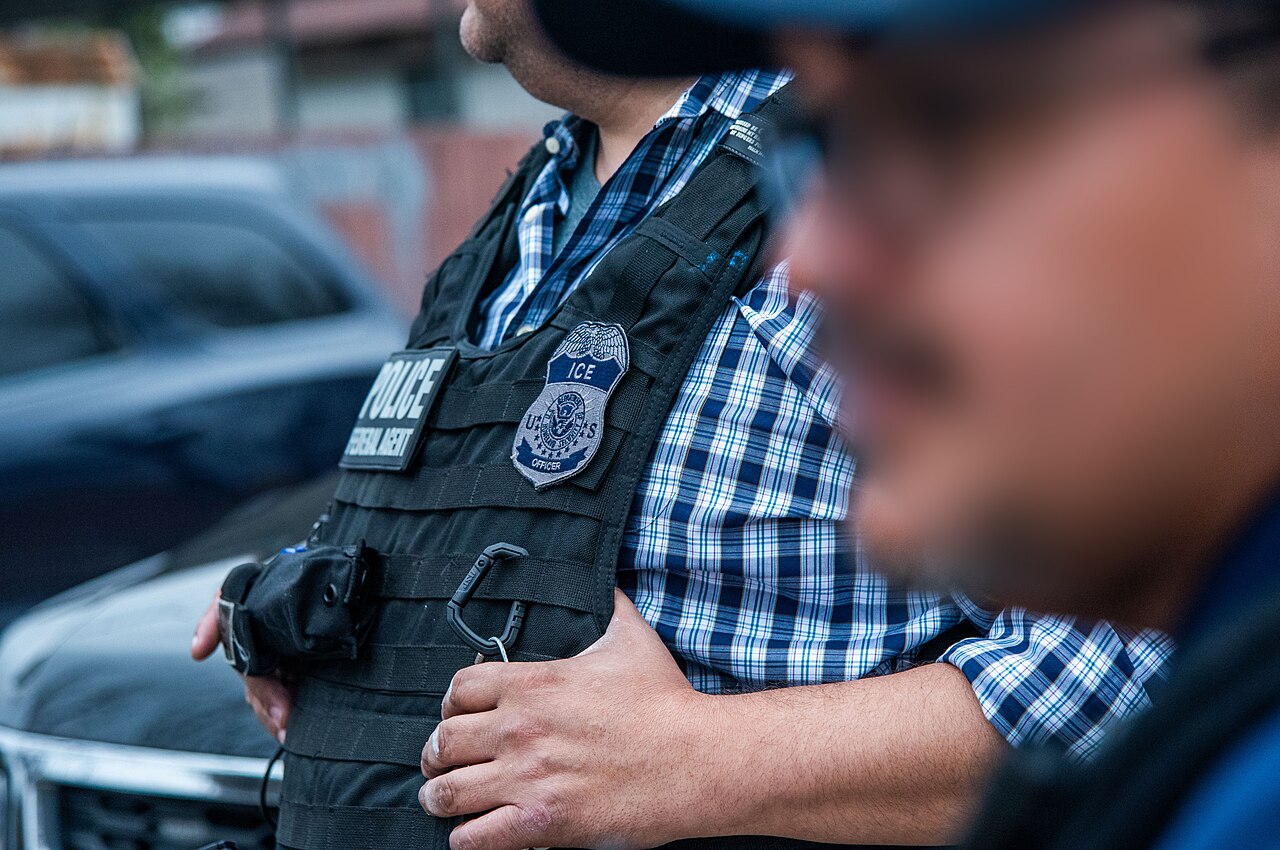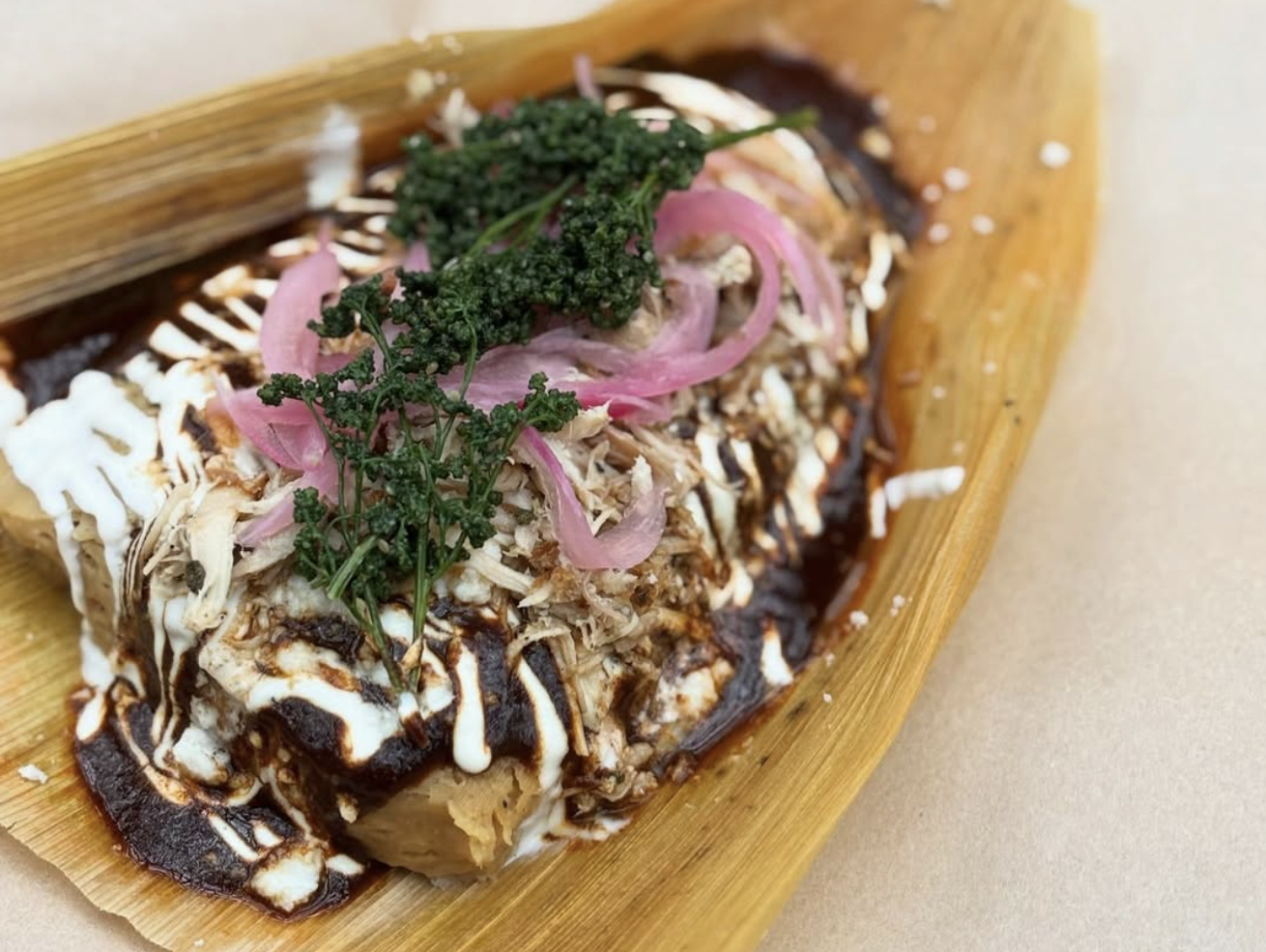[dropcap size=big]"I[/dropcap]ced doppio espresso!” yells a barista at the USC Village’s upscale new Starbucks.
There’s a bearded white guy sporting a newsboy cap passing out shots of nitro cold brew from tap and a yellow neon sign proclaiming COFFEE IS TOGETHERNESS. It’s been an academic year since the much-exalted $700 million USC Village opened, bringing with it tenants like Cava, the Chipotle of Mediterranean food, and Barilla, a pasta corporation once boycotted for its president’s anti-gay comments.
In 2010, while I was a student at USC, campus officials announced that the year-long leases of the tenants of the dilapidated but adored former “UV” would be converted to month-to-month in anticipation of leveling the space and building anew. The UV eventually shuttered in 2014 — there was even a Facebook event called for closure of the beloved Sandwich Island.
The end of the old UV left the small business owners who had grown dear to the community with the impossible task of finding an affordable space with the same captive audience. A single independent tenant, the Village Cobbler, was preserved from the old development.
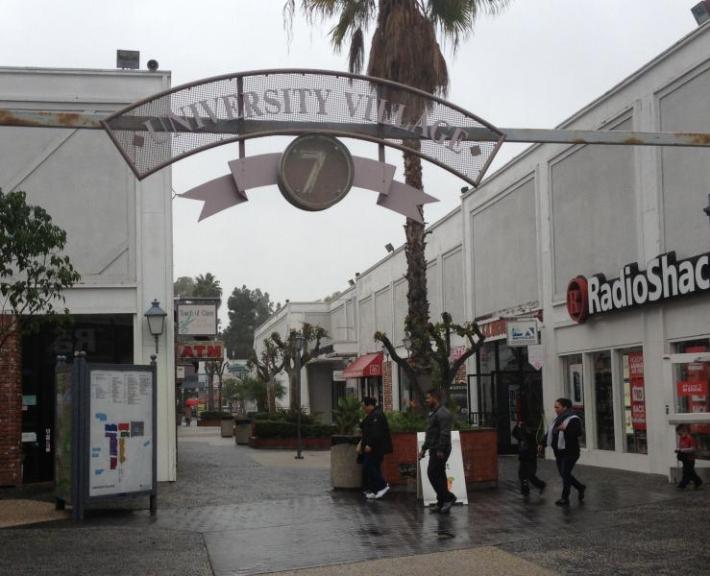
As a current USC staff member, I shouldn’t complain about a Trader Joe’s that will help me escape the apocalyptic experience of my local store on a Sunday, but I’m mindful of how all this higher-end corporate retail might affect University Park neighbors and surrounding communities.
Gentrification happens like this: high-end amenities attract new, wealthier folks to the neighborhood, leading to increased pressures on the rental market that indirectly displaces residents. To combat this, USC pledged $20 million towards affordable housing in the area, $10 million of which has already gone to a city housing program. USC has also promised to hire 30 percent of the Village workforce from low-income, local areas, with an emphasis on hiring people from within a 2-mile radius of USC.
RELATED: Why Locals in Historic Filipinotown Are Bracing for Gentrification

But is it enough?
Cynthia Strathmann, executive director of Strategic Actions for a Just Economy (SAJE), says, “The reason the university offered those community benefits is because community members fought really hard for them, and I think the university has been really happy to trumpet their existence.” But, she adds, “They really haven't put a lot of time or effort into the process of implementing them smoothly or making them complete.”
Strathmann works directly with community organizers who have shared the difficulties of community members securing jobs at the Village. What’s more, a much-needed tenant clinic put on by USC’s law school has paused and that $10 million for affordable housing remains largely tied up with the city, according to her.
With the new influx of housing, some of the pressure will be reduced on neighborhood residents competing for cheap rentals. USC will now have 40% of all undergraduates living in college housing, though it’s still low compared to UCLA at 48% and Pomona College at 98%. Research by Zumper, a rental platform, shows that one-bedrooms in the University Park area (trendily dubbed “Congress North”) have already experienced huge spikes in rent increasing to $1,600 in June 2017 from $1,200 in June 2015, an increase likely to continue growing.
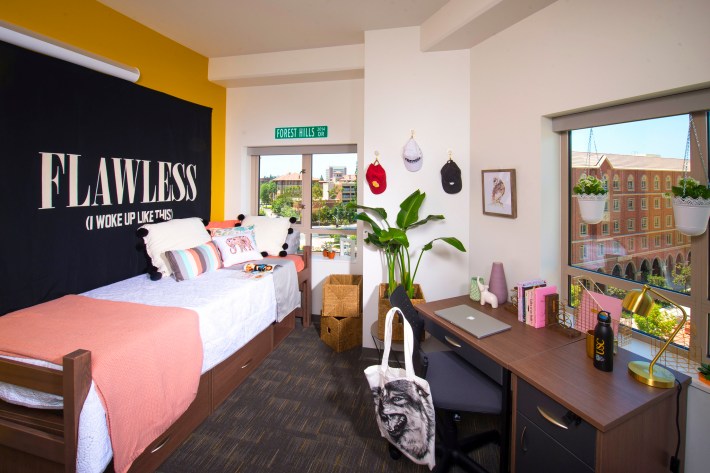
It’s an unreasonable cost for local households whose median income is only $22,485 according to the 2012-2016 American Community Survey 5-Year Estimates. Churches are a barometer of the neighborhood, Strathmann says, and they’ve become more and more depopulated. A lot of the families that used to attend local churches have already left.
Things used to be different at the former University Village, or “UV” as it was affectionately called. With shops that served the community for 40-plus years, the UV, near the intersection of Hoover and Jefferson, was one of the few places around campus that also served the larger neighborhood, which shared it with sheltered USC students like me.
Its international food court featured standouts like Sandwich Island, where the owner always remembered your order and never sweated you being a few bucks short. Quik-Pix Photo Lab was a rare lab that would develop disposable cameras and the Dollar Store occasionally sold colorful beta fish. Students and local families did their grocery shopping and movie watching together at Superior Grocers and the 5-dollar movie theater. Never mind the UV’s disproportionate parking lot, and don’t take it personally if you spotted your just-stolen bike for sale.
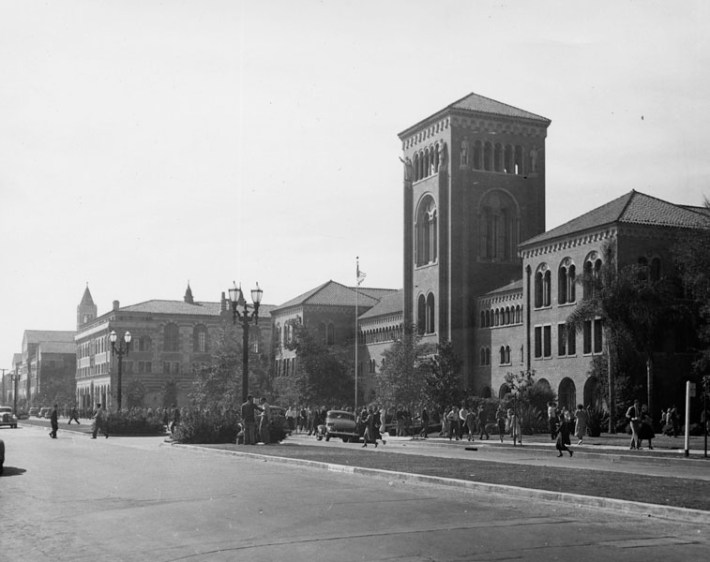
[dropcap size=big]B[/dropcap]ike shop owner and local resident Aaron “Lil Bill” Flournoy says he and other residents feel “not welcome” at the Village and that expensive prices discourage residents from shopping there. He says he would have loved the opportunity to move his shop to the Village. His family has served the community for two generations.
Perhaps, part of the problem stems from the students themselves. “I’ve been told students seem to ride their bike and skateboards without noticing too much,” says Strathmann. “It reflects an impression that the students don't realize they are sharing that space.”
As a student, the three-mile trip to L.A. Live, not exactly a bastion of culture, felt like a journey. Now, students aren’t encouraged to go more than 400 meters for their needs. My favorite activity as a USC staff member is to recommend outings to students that burst the USC bubble. Students should be tasting pan dulce at a nearby panaderia, taking the Metro to shop for pickled vegetables in Koreatown, or visiting exhibitions at the Underground Museum in Arlington Heights. It’s a far more formative experience to walk to Ralph’s on Vermont and Adams to buy your bread. After all, we shouldn’t be trying to replicate Westwood in South L.A.
The former UV was an increasingly rare space around USC that could accommodate the entire community. This new Village is more like the Grove and Americana: public spaces that aren’t that public — unless you’re shopping at Nordstrom’s. The Village has limited hours for non-students. The feeling permeates the new student dorms. Instead of halls of open dorm doors, the buildings are apartment-style, reducing socialization among students.
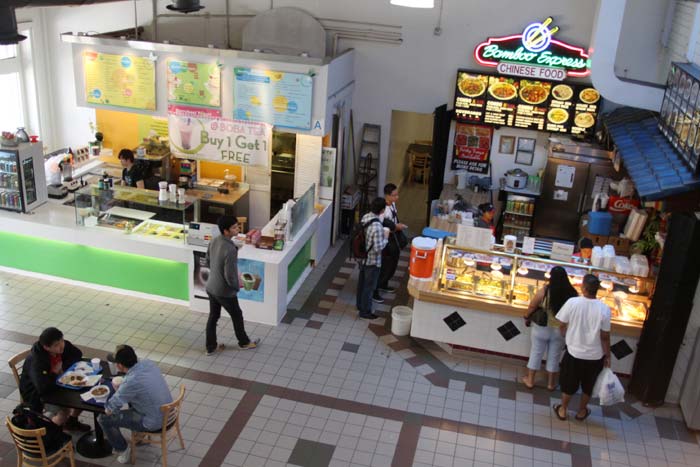
During my time at USC, the late USC President Steven B. Sample was a godly figure on campus. Shortly after he became president in 1992, the L.A. Riots engulfed South Los Angeles. Sample slept on his office floor and reassured students of their safety. He ignored calls to move the University to Malibu, insisting USC belonged in South L.A.
Thomas Gustafson, a longtime USC professor and former Birnkrant dorm faculty master, commends Sample on his efforts to include the neighborhood in his vision for the school. “Instead of turning our back on South Los Angeles there was much more of a sense of trying to not wall ourselves off from the neighborhood, but to open ourselves up with neighborhood academic initiatives, even in its architecture,” he says.
“USC by its fortification and security, it makes people scared or more fearful to explore the city. To take advantage of the range of the city, [students need] to go south, east, and not just west and north.”
The Village is the crown jewel for President C.L. Max Nikias, part of a building boom that has marked his tenure at USC. You can see the filtered images of his @uscpres Instagram. The Village was about building a space for students and the community, but what has gone up seems more suited to suburbia, not a research university in the heart of Los Angeles. Along with the comments championing the new Village, I will remember the old, dilapidated space that didn’t feel walled off from the community — and allowed walk-thrus at Wendy’s.
RELATED: Snapchat Is Pulling Out of Venice and Anti-Gentrification Activists Are Overjoyed
